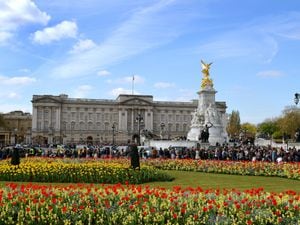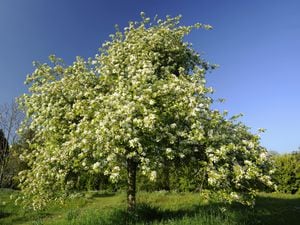Concern over number of homes built in areas of outstanding natural beauty
AONBs cover around 15% of England, from the Cotswolds to the North Pennines.

Almost 15,500 new homes have been given the go-ahead in some of England’s most picturesque landscapes in the past five years, campaigners have claimed.
The number of new housing units given planning permission each year in designated “areas of outstanding natural beauty” increased markedly between 2012-13 when 2,396 homes were approved and 2016-17 when the figure was 4,369.
And decisions are currently pending on another 12,741 homes in the protected areas across England – with fears that more than 8,000 could be given permission, based on current planning approval rates, a report says.
The research by independent consultants for the Campaign to Protect Rural England (CPRE) also found the average number of homes approved in each scheme has increased, as has the amount of land given over to housing in the landscapes.
Areas of outstanding natural beauty (AONBs) cover around 15% of England, from the Cotswolds to the North Pennines, and contain some of the most beautiful landscapes outside national parks.
But the CPRE is warning that, although the areas have the highest level of planning protection, they are coming under increased development pressure, particularly in the South West and South East such as the High Weald AONB.
Where councils cannot demonstrate a “five-year land supply” for new housing, or do not have a local plan in place, planning policy encourages developers to submit speculative housing applications, even in protected areas, the campaign group said.
The number of decisions to turn down major housing developments in the AONBs which are appealed is on the rise, but a growing proportion of the appeals are being rejected by government planning inspectors, the report found.
The CPRE argues the increase in rejections shows councils could be tougher on developers seeking to build in the protected landscapes.
Emma Marrington, CPRE senior rural policy campaigner, said: “What is, in effect, a sell-off of AONBs is surely among the worst examples of misguided housing policy, where the drive to build more houses, any houses, no matter how unaffordable, to meet housing targets, is at the cost of our most beautiful landscapes.
“While CPRE advocates the building of right homes in the right places, AONBs are not the right place.
“On top of this, current development on AONBs shows little evidence that what’s built will actually help solve the housing crisis, which is more to do with affordability than lack of land.”
CPRE is calling on the Government to toughen up planning policy on large housing developments in AONBs, include targets in a promised long-term environment plan to emphasise the importance of the treasured landscapes and give all such areas the right to be consulted on major development proposals in their area.
The charity also wants the new homes bonus to be reformed so it does not encourage large-scale house-building in the areas and for statistics to be published each year on rates of development and changes in land use in AONBs, similar to those already published for green belt land.
A Department for Communities and Local Government spokesman said: “We’re committed to conserving and enhancing areas of outstanding natural beauty – that’s why our national planning framework has strong protections in place.
“While it is for councils to make the final decision, we’re clear major developments should be refused unless there are exceptional circumstances and it would be in the public interest.”





